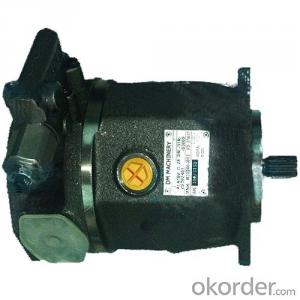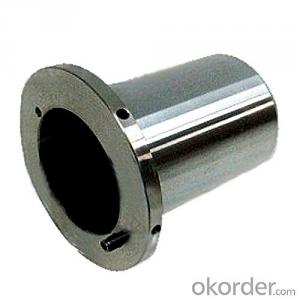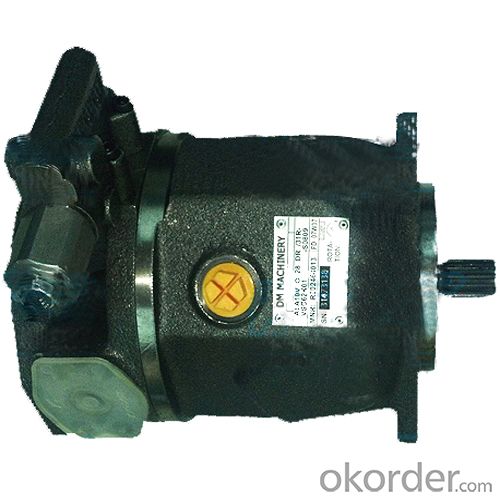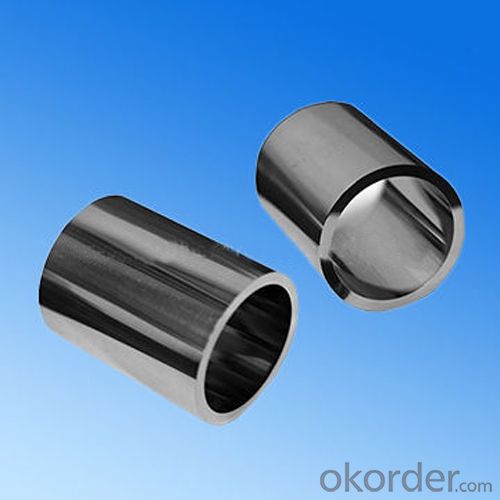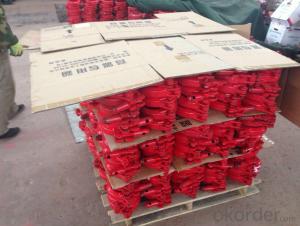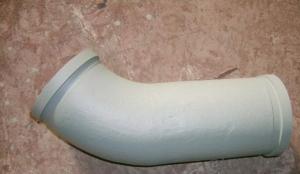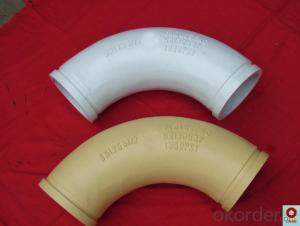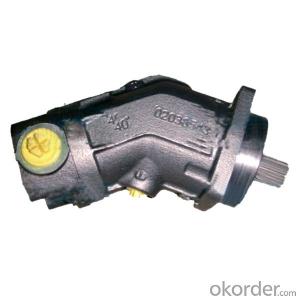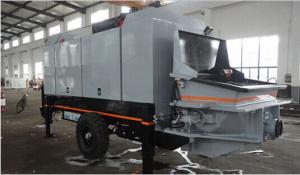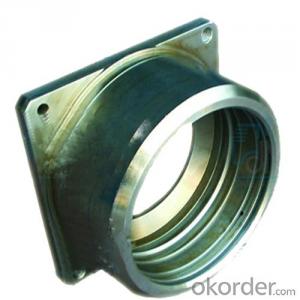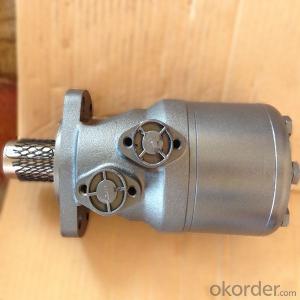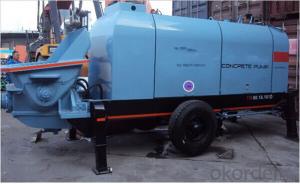Hydraulic Pump Concrete Pump Parts A10VO28
- Loading Port:
- Shanghai
- Payment Terms:
- TT OR LC
- Min Order Qty:
- 1 pc
- Supply Capability:
- 1000 pc/month
OKorder Service Pledge
OKorder Financial Service
You Might Also Like
Product information:
Hydraulic Pump is the basic parts among the spare parts of concrete pumps, mainly used in hydraulic system, it is a very important parts of the machine.It is manufatured from main land China.
Features:
Premium quality
· Prompt delivery & seaworthy packing (5-10 days)
Reliable performance
Easy to weld
High safety.
· Professional Service
· Competitive pricing
Measuring of wall thickness from the outside
Low purchase cost
Good functional lifespan
Applications:
Hydraulic Pump is often used in concrete pumps hydraulic system.
Advantages of our products:
Made from 100% virgin raw material
Produced with advanced equipment
All products go through in-process and final inspection
Free technical service online
FAQ:
Q1: How long about delivery time?
A1: Normally we keep the raw materials for old customers and sometime we also keep stock products to make sure delivery time in any emergency cases.
Q2: How do we guarantee the quality of our pipes?
A2: We have established an advanced quality management system which conducts strict quality tests at every step, from raw materials to the final product. At the same time, we provide extensive follow-up service assurances as required.
Q3: How to make a quick resolution for after service?
A3: OKorder and our manufacture both have overseas branches all-around of world, If needed,


- Q: What are the signs of wear and tear in concrete pump spare parts?
- Concrete pump spare parts may exhibit signs of wear and tear, which should not be overlooked. Some indicators include: 1. Surface damage: Cracks, dents, or scratches on pipes and hoses can signify wear and tear, particularly if they are extensive or deep. 2. Corrosion: Metal components like couplings or clamps may display signs of corrosion such as rusting or pitting, which can weaken the part and affect its functionality. 3. Leaks: Notable leaks in seals or gaskets can suggest wear and tear. Material degradation or improper installation can cause leaks, impacting the pump's efficiency and performance. 4. Decreased performance: Wear and tear in concrete pump spare parts can result in reduced overall performance. For instance, worn-out wear plates can diminish pumping capacity or increase energy consumption. 5. Heightened noise or vibrations: If noise levels or vibrations intensify while operating the concrete pump, it may indicate wear and tear in the spare parts. Imbalances, misalignments, or loose components can negatively affect the pump's performance and lifespan. 6. Excessive wear on moving parts: Moving parts like pistons or cylinders may exhibit excessive wear and tear, such as scoring or grooving on the surface. This can impede the smooth operation of the pump and potentially cause further damage if left unaddressed. Regular inspection and maintenance of concrete pump spare parts are vital to promptly identify and address any signs of wear and tear. Timely replacement or repair of worn-out components can prevent further damage, ensuring the concrete pump operates efficiently and safely.
- Q: What is the purpose of a concrete pump electric motor?
- The purpose of a concrete pump electric motor is to provide the necessary power and torque to pump concrete from one location to another, eliminating the need for manual labor and increasing efficiency in construction projects.
- Q: How can I minimize downtime during the replacement of concrete pump spare parts?
- Careful planning and efficient execution are essential for minimizing downtime when replacing concrete pump spare parts. Here are several strategies that can assist in achieving this goal: 1. Proactive maintenance: Establish a regular maintenance schedule to identify and replace worn-out parts before they malfunction. Regularly inspecting the concrete pump and its components can prevent unexpected breakdowns and reduce downtime. 2. Maintain spare parts inventory: Keep a stock of commonly needed spare parts, such as seals, filters, and hoses. This will significantly reduce the time spent on sourcing and ordering parts when a breakdown occurs. 3. Collaborate with dependable suppliers: Build relationships with reliable suppliers who can quickly provide high-quality spare parts. This ensures prompt access to the necessary components, minimizing delivery waiting time. 4. Train your team: Provide training to your maintenance and operational staff on efficiently identifying, troubleshooting, and replacing concrete pump spare parts. Equipping your team with the necessary skills enables them to promptly address issues, reducing overall downtime. 5. Schedule maintenance during low-demand periods: Plan maintenance and spare part replacement during periods of reduced demand or downtime. This could include weekends, holidays, or slower construction phases. Strategically scheduling the work ensures minimal impact on ongoing projects. 6. Optimize workflow: Identify areas causing delays or bottlenecks in your maintenance process. Seek opportunities to improve efficiency, such as optimizing the arrangement of spare parts, tools, and equipment, or implementing standardized repair and replacement procedures. 7. Utilize technology: Leverage technology to monitor the performance and condition of your concrete pump. Implementing a condition monitoring system can detect early signs of potential failures, allowing for proactive maintenance and part replacement. By implementing these strategies, you can minimize downtime during concrete pump spare part replacements, ensuring uninterrupted operations and maximizing productivity.
- Q: Are there any specific guidelines for the installation of control valves or solenoids in concrete pump spare parts?
- Yes, there are specific guidelines for the installation of control valves or solenoids in concrete pump spare parts. These guidelines typically include proper alignment, mounting, and connection procedures to ensure optimal performance and longevity of the components. Additionally, it is important to follow manufacturer's instructions and recommendations for the specific model of control valve or solenoid being installed.
- Q: How to deal with the blockage in the outlet of the distributing valve of the concrete pump?
- Pour the grout into the hopper, turn the pump in and out again and again, forcing the passage to open
- Q: What is the purpose of a concrete pump hopper grate?
- The main purpose of a concrete pump hopper grate is to safeguard the pump from any harm or obstruction that may be caused by large debris or foreign objects. Acting as a filter, this grate permits the passage of smaller particles and liquid concrete, while blocking bigger materials like rocks, wood, or other debris. By doing so, it ensures the pump's efficiency and functionality, guaranteeing a steady and uninterrupted flow of concrete. Moreover, the grate also provides protection for the pump's internal components, such as the impeller and valves, by preventing potential damage from larger objects. In summary, the concrete pump hopper grate holds immense significance in preserving the quality and dependability of the pumping process, effectively averting potential issues and ensuring the successful placement of concrete.
- Q: If the concrete pump valve jam how to judge and deal with?
- After checking the blocked section, remove the pipe and use high-pressure air blowing or heavy hammer or high pressure water to wash it. After thoroughly cleaning, connect the pipeline to pump the concrete work.
- Q: When concrete is poured, how high can the concrete pump be put?
- The car pump arm is long, traffic roads, the required pump stop position is bigger, so there are a lot of the site can not be use pump more than 60 meters (60 meters of general automobile pump, stop the pump and the leg position width of about 14 meters)
- Q: How do I properly maintain and replace wear plates in concrete pump spare parts?
- Achieving optimal performance and durability for your equipment relies heavily on the proper maintenance and replacement of wear plates in concrete pump spare parts. To ensure that your wear plates are adequately maintained and replaced, the following steps can be taken: 1. Conduct regular inspections: It is crucial to regularly inspect the wear plates in your concrete pump spare parts in order to identify any signs of wear or damage. Look for visible indications such as cracks, excessive wear, or deterioration. 2. Thoroughly clean the area: Prior to replacing the wear plates, it is essential to thoroughly clean the surrounding area. Remove any debris, dirt, or hardened concrete that may be present. Utilize a pressure washer or wire brush to effectively clean the surface. 3. Measure the thickness of wear plates: Utilize a precision measuring tool to determine the thickness of the wear plates. Compare the current thickness with the manufacturer's recommended specifications to determine if replacement is necessary. If the wear plates are below the recommended thickness, replacement is required. 4. Remove the old wear plates: Carefully remove the old wear plates using the appropriate tools. Take note of their positions and any alignment marks to ensure proper installation of the new plates. 5. Prepare the new wear plates: Prior to installing the new wear plates, verify that they are the correct size and meet the required specifications for your concrete pump. Inspect the new plates for any defects or damage before proceeding. 6. Apply lubrication: Apply a thin layer of lubricant or anti-seize compound to the mating surface of the new wear plates. This will aid in preventing corrosion and facilitate future replacements. 7. Install the new wear plates: Position the new wear plates accurately, aligning them with any reference marks or indicators. Secure them tightly using suitable bolts or fasteners, taking care not to overtighten. 8. Test and check alignment: After installing the new wear plates, perform a test run of the concrete pump to ensure proper functionality. Check for any leaks, uncommon vibrations, or misalignments. If any issues are detected, address them promptly. 9. Establish a regular maintenance schedule: To prevent premature wear and damage to the wear plates, create a routine maintenance schedule. This may involve cleaning, lubricating, and inspecting the wear plates at specified intervals or after a certain number of operational hours. By adhering to these steps and adopting a proactive approach to wear plate maintenance and replacement, you can guarantee the seamless operation and extended lifespan of your concrete pump spare parts.
- Q: Are there any specific safety considerations when using concrete pump spare parts?
- Yes, there are specific safety considerations when using concrete pump spare parts. It is essential to ensure that the spare parts are compatible with the concrete pump and installed correctly to prevent any potential hazards. Regular inspections and maintenance of the spare parts are also crucial to ensure their safe and efficient operation. Additionally, following proper safety protocols, such as wearing appropriate personal protective equipment and adhering to manufacturer guidelines, is necessary to minimize the risk of accidents and injuries.
Send your message to us
Hydraulic Pump Concrete Pump Parts A10VO28
- Loading Port:
- Shanghai
- Payment Terms:
- TT OR LC
- Min Order Qty:
- 1 pc
- Supply Capability:
- 1000 pc/month
OKorder Service Pledge
OKorder Financial Service
Similar products
Hot products
Hot Searches
Related keywords
